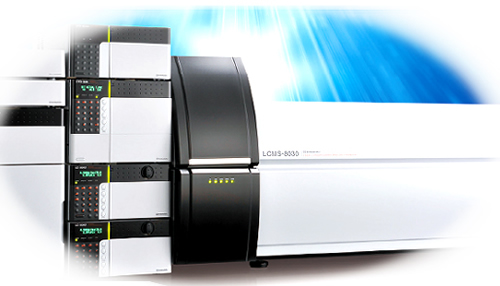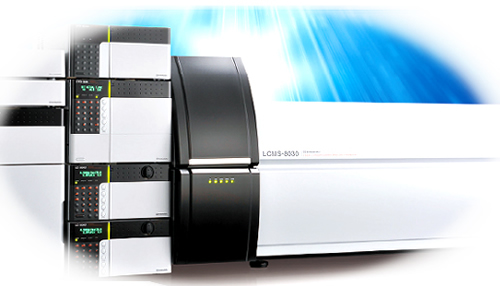
World Fastest* Tandem Quadrupole LC/MS/MS System: Provides Speed Beyond Comparison for Multi-Analyte Determination

Triple Quadrupole Mass Spectrometry is the method of choice for accurate quantification and confirmation of trace level analytes in complex matrices. From the detection of drugs and metabolites in biological specimens to environmental contaminants and pesticides in food, analysts the world over are challenged with detecting an increasing number of target analytes with greater sensitivity and in more samples than ever before. Shimadzu understands these requirements. That is why we have combined our experience from different fields to build a mass spectrometer that can keep pace with the chromatographic resolving power of our world-leading UHPLC systems without any speed limitation. The LCMS-8030 couples the power of a Triple Quadrupole Mass Spectrometer with unparalleled speed to provide the ideal compliment to both UHPLC and HPLC systems.
With Ultra Fast MRM transitions and Ultra Fast polarity switching, LCMS-8030 is truly a universal detector for UHPLC or HPLC.
Introducing the Next Generation Triple Quadrupole Technology
- Fusion of Ultra Fast MRM and Ultra Fast Polarity Switching of 15msec
- An Ultra Fast Scan Speed of 15,000 u/sec
- 500 MRMs per Second, the Most Ever Possible
Even during Ultra Fast Measurements, the LCMS-8030 Provides Reliable and Reproducible Data
- Robust System Provides Long-term Data Stability
- UFsweeper™ Technology Dramatically Minimizes Cross Talk
- Excellent Linearity with Wide Dynamic Range
The Strength of a Single-vendor Solution Results in Seamless Operation
- Minimize Instrument Downtime with Easy Maintenance
- Single-vendor Solution Provides Seamless Operation
- Quantitation Browser for Effective Multi-analyte Quantitation
Brief explanation of LCMSMS terminology
MRM
MRM stands for Multiple Reaction Monitoring. In MRM, a specific ion (precursor ion) is selected in Q1 (first stage MS) from among various ions ionized by the ionization probe, the ion is destructed (collision-induced dissociation) in the collision cell (Q2, collision chamber), and a specific ion is detected from among the destructed ions (product ions) in Q3 (second stage MS). Multiple channels can be set in one measurement.

